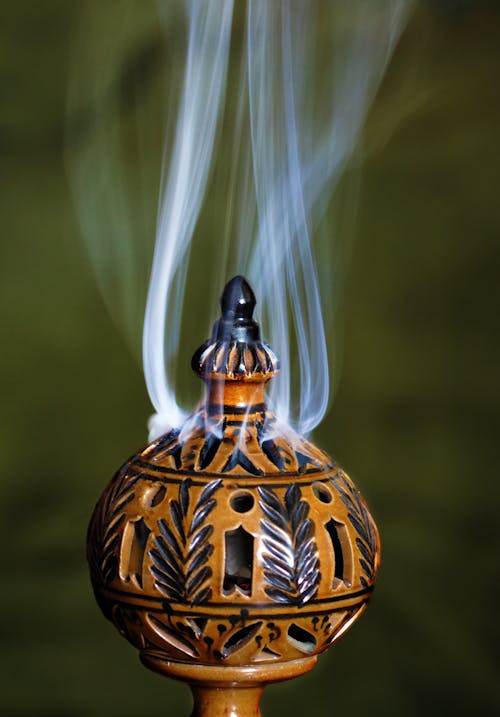Eastern remedies rediscovered in the West
Author: Cordula Elisabeth Linke
While industrial pharmacology developed in Europe around 1900, the millennia-old Ayurveda was modernized in India. The author shows how Western and Eastern medicine merge today in what we know as Naturopathy. How today’s scientific technology reinterprets traditional Ayurveda, using the well-known examples of turmeric root and Indian frankincense.
Nature has always been there for us humans. Since the beginning of human history, we have helped ourselves from its healing garden. Well, what’s revolutionary about that, you might ask. Let’s take a look back at the time of industrialization: At that time, machine work more and more replaces manual work, automation takes hold. Science advances and produces new technological findings. Modern medicine and its pharmaceuticals are the new revolution. Things start slowly with the discovery of penicillin and the large-scale production of aspirin. Drugs are scientifically developed and produced. Modern science focuses on individual active ingredients. They isolate them from extracts or synthesize in the laboratory. These are compressed into tablets or bottled and then go over the pharmacy counter to the general public. Soon it will be “ask your doctor or pharmacist about risks and side effects”.
At the same time Germany marketed aspirin at the end of the 19th and beginning of the 20th century, another revolution began on the other side of the globe in India. The Vedic scholar Maharishi Mahesh Yogi revisited millennia-old Ayurveda system in collaboration with Ayurvedic experts in India and further developed into a scientifically based Ayurveda system.
Tradition and science go hand in hand.
Thus, Ayurveda has never lost its philosophical roots in the Vedanta tradition and the Vedic sciences, but has rather been supplemented by modern scientific knowledge.
LONGING FOR NATURALNESS
Let’s look back to Europe. As modern pharmacy develops more and more active ingredients, brings them to market and conducts research, medicines become vital. Industrialization and wars in Europe rapidly increase the need for medical care and rapid assistance. At the end of the 20th century, after the turmoil of the war years, people slowly begin to regain their composure, and it is time to devote more time to the self and to nature.
A return to traditional naturopathy takes place, and the call for more than just white pills with quick effects and quite a few side effects gets louder.
We remember back to the druids and natural healers, the wise abbots and abbesses, the doctors and healers of centuries past, and our rich plant life.
People long for sustainability and naturalness.
TURMERIC COMBINES TRADITION AND SCIENCE IN NATUROPATHY
Today we can find more and more preparations in pharmacies, which are a mix of modern Western naturopathy and Ayurvedic healing philosophy. Probably the best-known representatives of these are Indian frankincense, the sleeping berry (ashwagandha), Indian asparagus (shatavari), aloe vera, ginger and the neem tree.
Meanwhile, a classic is turmeric, or Curcuma longa, as botany knows it. In the Ayurvedic tradition it is “golden milk”, together with black pepper, cardamom and honey stirred in milk. They also use it as a spice in the kitchen and as a component of medicinal powders (churna). It has a reputation to make joints more flexible and tendons more supple. Due to its bitter and pungent taste, it works on digestive weakness and applies to support the liver-biliary function (strengthening Agni, the fire of digestion).
Also Turmeric acts as a remedy for allergies and hay fever. It cures inflammation of all kinds (a disturbance of pitta dosha) and various skin diseases. Due to its bitter and pungent taste, it breaks down toxins (ama) and helps reduce kapha dosha. Turmeric root is a little jack-of-all-trades, as it also has a soothing effect on Vata dosha. Especially in the gastrointestinal tract: flatulence and cramps ease up, and the nervous system benefits from its vegetative calming effect. Turmeric root contains essential oil with various monoterpene components. This would be phellandrene, cineole and borneol. Furthermore, in the “miracle root” we find an oily substance with sesquiterpenes, including tumerol, zingiberene and various curcuminoids, which act as natural antioxidants.
FRANKINCENSE IN NATUROPATHY
Another popular Ayurvedic medicinal plant is Indian frankincense (botanically Boswellia serrata or Shallaki in Sanskrit). It is native to the dry and hilly areas of India near the Himalayan Mountains, in Assam and West Bengal.Aancient Ayurvedic writings such as the Charaka Samhita (1st century BC) or the Bhava Prakasha Nighantu (15th/16th century AD) already described Frankincense’s healing properties. The resin of the Indian incense tree finds use. For medicinal purposes they collect and process the rubbery oleoresin, which comes out after the bark is scratched.
 The naturopathy revolution
The naturopathy revolution
For inflammatory diseases Ayurveda ususally, traditionally uses frankincense. The main areas of use in Ayurvedic medicine are the nervous system. Also it finds use for inflammation of the musculoskeletal system, respiratory system, thyroid, digestive system, genitourinary system and skin. Due to its pitta dosha-reducing properties, it cools inflammation from within. Thus it acts on diarrhea, bronchitis, asthma, fever and bleeding. Also it works externally on skin diseases and for room disinfection as an incense.
Last but not least is its use in a spiritual context. For thousands of years it has been used in religious circles for prayer, meditation and in worship. It was one of the three gifts of the Three Magi to the baby Jesus and the Bible mentions it 17 times. Even then, frankincense was very precious for its anti-inflammatory properties and in use as a perfume. The smell of frankincense improves cognitive qualities, can relieve negative emotions such as anxiety and stress, and harmonize hormonal balance. It can be incense or also essential oil. In short, the scent of incense drives away “evil spirits” and deepens meditation. It purifies the body and mind, and allows the soul to breathe a sigh of relief.
Ayurvedic medicinal plants in Western medical use are a wonderful example of how cultures from East and West can enrich and expand each other. Nature is and remains the best medicine cabinet one could wish for. Every now and then, we extend its healing power through pharmaceutical developments, thus ensuring optimal efficacy and tolerability. It remains exciting which revolutionary discoveries and developments the 21st century has in store for us and how the Ayurveda tradition will be carried forward. For as Thomas More once said, “Tradition is not the worshipping of ashes, but the passing on of fire.”
 About the author
About the author
Cordula Elisabeth Linke has been working as a pharmacist, yoga teacher and Ayurveda expert in Berlin for six years. Since 2019 she is a Heilpraktikerin and is looking forward to a new professional start with Ayurveda, reflexology and Western phytotherapy. Contact: info@cordulalinke.de
This article was published originally on the German Homepage of Tattva Viveka: Die Naturheilkunde-Revolution




